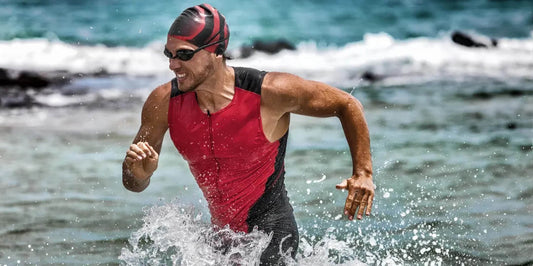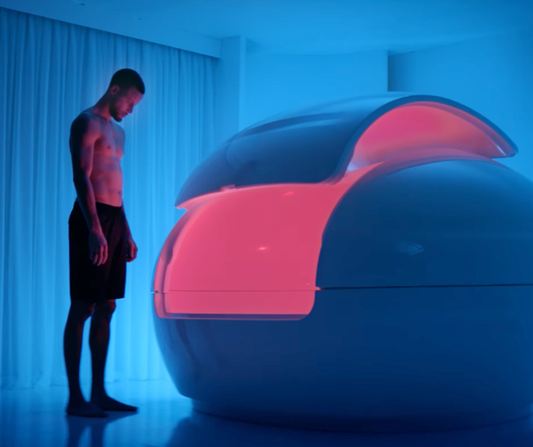What is Osteoarthritis, and Why It’s Growing
Osteoarthritis (OA) is when the cartilage that cushions the ends of bones in joints (knees, hips, hands mostly) gradually breaks down. That causes pain, swelling, stiffness, and reduced movement.

In Australia, OA is already the most common form of arthritis. In 2022 about 2.1 million people (roughly 8.3% of the population) were living with OA. As the population gets older, these numbers are projected to increase significantly. By 2040, it’s likely 3.1 million people will have OA. The burden is not just numbers, but more pain, more medical costs, more joint replacements (hips, knees), more hospital stays and more daily wear on people who are still working or trying to stay active.

Factors Driving the Rise
There are several reasons why OA is getting more common in Australia:
-
Aging: Older people are much more likely to have OA. For example, prevalence jumps from about 10% among people aged 45-54 to around 30% in those 75+ years
-
Gender: Women are more likely than men to have OA. The data show significantly higher rates in females
-
Lifestyle & weight: Carrying extra body weight increases stress on joints (especially knees). Less physical activity, repetitive strain, injuries also contribute
-
Health system awareness & diagnostics: As medical care improves and people are living longer, more cases are diagnosed and treated. Also more surgeries like joint replacements happen
What “Gentle Recovery” Means
Since OA is degenerative and cannot (as of now) be fully reversed in many cases, managing it responsibly is about being gentle, consistent, and smart. Here are what “gentle recovery” practices look like:
-
Low-impact movement/exercise (e.g. swimming, walking, cycling, tai chi): helps maintain joint mobility and muscle strength without overloading the joints
-
Physical therapy / guided stretching: helps reduce stiffness and improve flexibility
-
Heat or warm water therapy (like warm baths or saunas) to ease stiffness and promote blood flow
-
Cold therapy or contrast (warm + cold) to reduce swelling and discomfort
-
Weight management: losing small amounts of weight if needed reduces joint load significantly

Science Behind Why Gentle Recovery Helps
Some scientific findings that support these gentle recovery methods:
-
The Australian Institute of Health and Welfare (AIHW) reports that treatments and management of OA cost the Australian health system billions, in part because untreated or badly managed OA leads to joint replacements and hospitalization. Regular gentle care can delay or reduce those more invasive treatments
-
A modeling study projects by 2040, OA will affect 3.11 million Australians; so reducing burden via non-surgical care (rehab, exercise, weight control) can have big public health benefits
-
More recent research (from Queensland) has uncovered hundreds of genetic associations with OA, which suggests individual risk varies and early lifestyle intervention may help where genetics predispose
Practical Steps for Gentle Recovery in Day-to-Day Life
Here are actionable ways people with OA (or worried about it) can use gentle recovery methods in daily life:
-
Start small with movement
A daily short walk, gentle swim, or non-impact exercise. Consistency is more important than intensity -
Use heat & cold
Warm showers or baths to loosen up stiff joints; ice packs to reduce swelling after activity -
Stretch & mobility routines
Simple stretches (hamstrings, calves, hips) especially after sitting long periods. Yoga or Tai Chi can help too -
Mindful weight management
Even losing 5-10% of body weight can reduce joint pressure and improve symptoms -
Rest & recovery sessions
Allow time for joints to rest after activity; avoid over-loading; use therapies that help recovery quietly, like floatation, massage, compression
Examples & Anecdotes
-
Many people avoid knee or hip replacements for a long time by combining movement, weight control, and periodic physical therapy
-
Clinics offering non-surgical care often show patients have reduced pain and improved function after months of consistent gentle intervention
-
International guidelines (e.g. from Arthritis Australia) emphasize non-pharmacological treatments first (exercise, weight loss, movement) before heavier medical/surgical options
Given the projected rise, OA is not just a problem for older people. More people of working age will be affected, which has implications for productivity, quality of life, and health care costs. Focusing on gentle recovery practices now can help slow progression, reduce pain, and keep people active longer. It also means fewer costly surgeries, less time off work, and better wellbeing. For wellness centers, clinics, and individuals, it’s time to invest in accessible recovery tools, education on movement and joint care, and prevention strategies.





